
Sri Lanka is recognized as a global hotspot for reptile diversity, offering a unique opportunity for observation and study due to its tropical climate, extensive natural forests, and supportive environmental conditions. The island boasts an impressive array of reptile species, making it a premier destination for herpetologists and nature enthusiasts alike.
Reptile Diversity in Sri Lanka
- Total species: Sri Lanka is home to 208 species of reptiles.
- Endemic species: Of these, 116 are endemic, showcasing the island’s unique ecological niche.
- Snakes: The island has 96 species of snakes, one of the highest densities in the world, with nearly 50% being endemic. This includes:
- 13 species of coastal water snakes
- 10 species of blind snakes
- 5 truly venomous species
- Crocodiles: Sri Lanka hosts two species of crocodiles, the Mugger crocodile being the most common.
- Turtles and Tortoises: The Island supports a rich variety of chelonians, including 8 species of marine turtles, several freshwater turtles, and one species of land tortoise.
Key Habitats for Reptiles
- National Parks: Many of Sri Lanka’s national parks, such as Yala, Wilpattu, Udawalawe, Wasgamuwa, and Minneriya, are excellent locations for reptile observation.
- Sinharaja Forest Reserve: A UNESCO World Heritage Site, Sinharaja is particularly noted for its biodiversity and is a significant habitat for many of the island’s endemic reptiles.
Conservation and Observation
Efforts to conserve Sri Lanka’s rich reptilian biodiversity are crucial due to the ecological roles these animals play. The island’s national parks and reserves not only protect these species but also provide visitors with opportunities to observe them in their natural habitats, contributing to eco-tourism and education.
For anyone interested in the natural world, Sri Lanka offers an unparalleled window into the diversity and beauty of reptilian life, underscored by the island’s commitment to conservation and sustainable wildlife management.
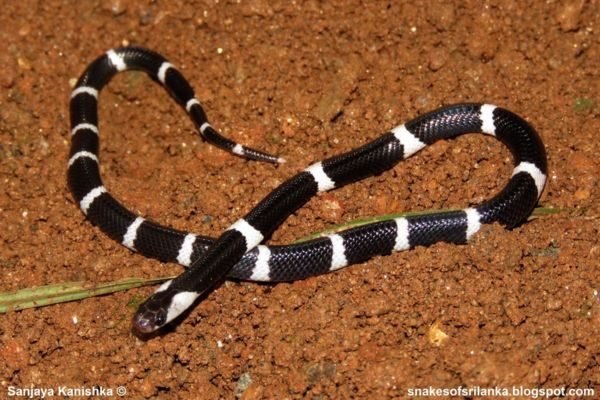
SRI LANKAN KRAIT
The Sri Lankan Krait, also known as the Ceylon Krait (Bungarus ceylonicus), is a venomous snake belonging to the elapid family and is endemic to Sri Lanka. This species is primarily located in the wet and intermediate zones of the country, which include the mountainous regions.
Key Characteristics
- Size: The Sri Lankan Krait is relatively small, typically measuring about 250mm (10 inches) in length.
- Appearance: It is easily identifiable by its glossy black body with distinct white bands that traverse its length.
- Behavior: When threatened or irritated, the Sri Lankan Krait exhibits a unique behavior by elongating its unusually long lung, a defensive mechanism not commonly seen in other snakes.
Habitat and Diet
- Habitat: The snake thrives in the wet and intermediate zones of Sri Lanka, favoring environments that provide ample cover and moisture.
- Diet: Its diet primarily consists of small mammals like rats, as well as frogs and other small reptiles, playing a role in controlling the population of these species in its native habitat.
Venom and Safety
- The venom of the Sri Lankan Krait is potent, like that of other kraits, and contains neurotoxins that can cause serious medical conditions if not treated promptly.
- Despite its venomous nature, the Sri Lankan Krait is generally shy and avoids human contact, but caution is advised when in areas known to be inhabited by this species.
The Sri Lankan Krait is an interesting example of the island’s unique biodiversity, contributing to the ecological balance by controlling populations of various small creatures. For visitors and locals alike, understanding and respecting the habitat of this snake is essential for safety and conservation efforts.
BOULENGER’S KEELBACK
The Boulenger’s Keelback, also known as the Sri Lankan Keelback (Xenochrophis asperrimus), is a non-venomous water snake endemic to Sri Lanka, thriving in both the dry and wet zones of the island. This snake is commonly found near freshwater bodies, reflecting its adaptation to an aquatic lifestyle.
Key Characteristics
- Appearance: The Boulenger’s Keelback has a short, cylindrical body colored olive brown, with large black spots on the front part of the body. Its head is dark, and it features two distinct black stripes behind its eyes.
- Size: It is noted for its unusually long tail, which aids in swimming and maneuvering in water.
- Behavior: This snake is both nocturnal and diurnal, active during the day and night, which makes it quite adaptable in terms of hunting times.
Habitat and Diet
- Habitat: Preferring the proximity of freshwater environments, Boulenger’s Keelback is typically found in rivers, lakes, and ponds across Sri Lanka.
- Diet: Its diet primarily includes fish, crustaceans, amphibians, and small reptiles. The snake’s aquatic and terrestrial foraging abilities allow it to exploit a range of prey items.
Conservation and Interaction
- Being non-venomous, Boulenger’s Keelback poses no venomous threat to humans, but like all wildlife, it should be respected and observed from a safe distance.
- The snake plays a crucial role in the control of aquatic and semi-aquatic species populations, contributing to the ecological balance of its natural habitats.
Boulenger’s Keelback is an excellent example of Sri Lanka’s rich reptilian diversity, showcasing the unique adaptations of endemic species to the island’s varied environmental conditions. Its presence in both dry and wet zones underscores the broad adaptability and ecological importance of this species within local ecosystems.
SRI LANKAN FLYING SNAKE
The Sri Lankan Flying Snake (Chrysopelea taprobanica), an intriguing species found in the dry and intermediate zones of Sri Lanka, is renowned for its ability to “fly” or glide from tree to tree. This diurnal snake spends most of its life in the trees, showcasing unique adaptations that facilitate its aerial movements.
Key Characteristics
- Appearance: It has a medium-sized, long, and flattened body adorned with striking yellow and black stripes, interspersed with red spots, which provide camouflage among the foliage. The snake has a depressed head and large eyes with distinctive pupils, enhancing its visual acuity for navigating through treetops.
- Gliding Ability: The Sri Lankan Flying Snake is one of the few snakes capable of gliding, using its flattened body to catch the air as it leaps between trees, making long and graceful glides that can cover significant distances.
Habitat and Behavior
- Habitat: This species is commonly found in cultivated fields and areas of thick vegetation, preferring arboreal habitats that support its gliding behavior.
- Diet: As a mildly venomous snake, it preys on small reptiles, birds, and rodents, using its venom to subdue larger or more active prey, which is typical of arboreal hunting strategies.
Venom and Interaction
- Venom: The venom of the Sri Lankan Flying Snake is mild and primarily used for subduing prey rather than defense. It poses little threat to humans, and bites are rare due to the snake’s arboreal nature and avoidance of ground-level human activity.
- Conservation: Like many unique species, the Sri Lankan Flying Snake plays a vital role in its ecosystem, particularly in controlling the populations of small vertebrates. Preserving its habitat is crucial for maintaining the ecological balance and ensuring the survival of this fascinating species.
The Sri Lankan Flying Snake is a remarkable example of evolutionary adaptation, showcasing how certain species have evolved extraordinary methods of movement and survival in their natural habitats. Its presence enriches the biodiversity of Sri Lanka and adds to the island’s reputation as a hotspot for unique and endemic wildlife.
OLIVE RIDLEY
The Olive Ridley Sea Turtle (Lepidochelys olivacea) is one of the smaller species of sea turtles, renowned for its unique mass nesting called “arribada,” making it a fascinating subject of marine biology. Predominantly found in the warm waters of the Indian Ocean, this species plays a significant role in marine ecosystems.
Key Characteristics
- Size and Appearance: The Olive Ridley is relatively small, averaging 60-70 centimeters in length and weighing up to 50 kg. It has a distinct heart-shaped carapace in its juvenile stage, which turns olive green as it matures, giving the species its name.
- Unique Nesting Behavior: Unlike other sea turtles, Olive Ridleys participate in arribada, a phenomenon where thousands of females congregate on the same beach to lay eggs simultaneously. This spectacular event is crucial for their survival strategy, overwhelming predators and increasing the chances of offspring reaching maturity.
Habitat and Diet
- Habitat: The Olive Ridley is highly migratory, spending most of its life in open oceans but returning to coastal areas for nesting.
- Diet: This species has a varied diet that includes jellyfish, shrimp, mollusks, and small fish, contributing to its role in maintaining the health and balance of the marine food web.
Conservation Status
- Threats: The Olive Ridley faces numerous threats including habitat loss, accidental capture in fishing gear, and pollution. Its nesting sites are particularly vulnerable to human activities.
- Conservation Efforts: Numerous international and local conservation programs focus on protecting nesting beaches, regulating fishing practices, and raising awareness to ensure the survival of this globally important marine species.
With an average lifespan of about 50 years, the Olive Ridley Sea Turtle is an essential component of tropical and subtropical ocean ecosystems. Efforts to conserve it are vital not just for the species itself but also for the broader health of the oceans. Observing this turtle, especially during an arribada, provides a rare glimpse into one of nature’s most extraordinary reproductive behaviors.
LOGGERHEAD SEA TURTLE
The Loggerhead Sea Turtle (Caretta caretta) is a notable marine species recognized for its robust size and distinctive reddish-brown carapace. This turtle is especially known for its large head and powerful jaws, well-suited to its carnivorous diet.
Key Characteristics
- Appearance: The Loggerhead has a slightly heart-shaped carapace and a notably large head compared to other sea turtles. Adults can reach about three feet in length and typically weigh around 250 pounds (113 kg).
- Color: The carapace of the Loggerhead is a reddish-brown, which helps distinguish it from other sea turtle species.
Habitat and Behavior
- Habitat: Loggerhead Sea Turtles are predominantly found in open oceans but are also known to inhabit estuarine environments like bays, lagoons, and salt marshes. They are capable of migrating hundreds of miles from their feeding grounds to their nesting sites.
- Nesting: Female Loggerheads come ashore to lay eggs, typically on the same beaches where they were hatched. This nesting process is crucial for the continuation of their species and occurs once every two to four years.
Diet
- Feeding Habits: Loggerheads are carnivores with a diet primarily consisting of marine invertebrates. Their strong jaws allow them to crush hard-shelled prey such as crustaceans, mollusks, and other small marine animals.
Conservation Status
- Threats: The Loggerhead faces several threats including habitat loss, accidental capture in fishing gear, and marine pollution. The beaches used for nesting are particularly vulnerable to human activities.
- Conservation Efforts: Efforts to protect Loggerhead Sea Turtles include safeguarding their nesting beaches, regulating fishing practices to prevent bycatch, and international agreements to protect their habitats across national boundaries.
Loggerhead Sea Turtles are believed to have a lifespan of about 50 years. Conservation of this species is crucial not only for maintaining marine biodiversity but also for the health of marine ecosystems where they serve as important predators of invertebrates. Their presence in marine environments highlights the interconnectedness of oceanic ecosystems and the importance of concerted global conservation efforts.
LEATHERBACK SEA TURTLE
The Leatherback Sea Turtle (Dermochelys coriacea) stands out as the largest of all living turtles and ranks as the fourth heaviest modern reptile. Known for its unique physical characteristics and impressive size, this turtle is a marvel of the marine world.
Key Characteristics
- Size: The Leatherback can grow up to seven feet (about two meters) in length and weigh over 2,000 pounds (around 900 kg), making it the largest turtle species by far.
- Appearance: Unlike other sea turtles, the Leatherback does not have a hard shell. Instead, its large, teardrop-shaped body is covered with skin and oily flesh. It is predominantly grayish-black and features seven distinctive ridges running longitudinally from the front to the back of its body, enhancing its hydrodynamic shape.
Habitat and Behavior
- Habitat: Leatherback Sea Turtles are highly migratory, traveling vast distances through the world’s oceans. They are capable of diving to depths of over 1,000 meters, deeper than any other turtle, in search of food, and can be found in both cold and warm waters.
- Diet: Their diet primarily consists of jellyfish, which they consume in large quantities. The Leatherback’s ability to eat and digest jellyfish helps control jellyfish populations, which is beneficial for the marine environment.
Adaptations
- Physical Adaptations: The Leatherback’s large pair of front flippers are exceptionally powerful, enabling rapid movement through the water. This, combined with its streamlined body, allows the Leatherback to swim long distances efficiently.
- Thermal Regulation: Leatherbacks possess adaptations that allow them to regulate their body temperature and survive in colder waters, unlike most other reptiles. This adaptation expands their range significantly, enabling them to inhabit a wider variety of marine environments.
Conservation Status
- Threats: Despite their impressive size, Leatherbacks face significant threats from marine pollution, particularly plastic bags, which they can mistake for jellyfish, leading to ingestion and potential harm. Additionally, their nesting sites are endangered by habitat destruction and climate change.
- Conservation Efforts: Efforts to conserve Leatherback turtles include protecting their nesting sites, international cooperation to safeguard migration routes, and initiatives to reduce marine pollution and bycatch in fishing gear.
The Leatherback Sea Turtle is a critical species for marine ecosystems, contributing to the ecological balance of its marine habitats. Protecting this magnificent creature is essential for the health of the marine environments it inhabits and the biodiversity of the ocean.
GREEN TURTLE
The Green Turtle (Chelonia mydas) is the most commonly found turtle in Sri Lanka and stands out as one of the largest sea turtles globally. This species is especially notable for its distinct physical features and dietary habits.
Key Characteristics
- Appearance: The Green Turtle is recognized by its large, flattened body with a teardrop-shaped, blackish-grey shell. It has a relatively smaller head compared to the Loggerhead Turtle and is equipped with large, paddle-like flippers that aid in swimming.
- Size: Adults typically weigh between 68 and 190 kg, with some exceptional individuals reaching up to 315 kg.
Habitat and Behavior
- Habitat: Green Turtles are primarily found in the tropical and subtropical waters of the world’s oceans. They are highly migratory, traveling long distances between their feeding sites and the beaches where they nest.
- Diet: Unique among sea turtles for their herbivorous diet, Green Turtles feed exclusively on marine vegetation, including algae and seagrass. This diet is crucial for their development and the greenish color of their body fat, from which they derive their name.
Nesting and Reproduction
- Nesting: Female Green Turtles return to the shore to lay their eggs, often on the same beaches where they were hatched. This nesting behavior is vital for the continuation of their species and usually occurs at night to minimize disturbance and predation.
Conservation Status
- Threats: Green Turtles face several threats including habitat loss, poaching, accidental capture in fishing gear, and pollution. Their nesting beaches are particularly vulnerable to the effects of climate change and human interference.
- Conservation Efforts: Conservation strategies for Green Turtles include protecting nesting sites, regulating fishing practices to prevent bycatch, and global treaties that safeguard migratory species. Education and awareness programs also play a key role in their conservation, aiming to reduce human impact on their natural habitats.
The Green Turtle is an iconic species within marine ecosystems, playing a significant role in maintaining the health of seagrass beds and coral reefs. Efforts to protect this magnificent marine creature are essential for ensuring the health of the marine environments it inhabits and the overall biodiversity of the oceans.
MUGGER CROCODILE
The Mugger Crocodile (Crocodylus palustris), also known as the Marsh Crocodile, is a significant reptilian species found in Sri Lanka, where it coexists with the larger Saltwater Crocodile. Listed as vulnerable on the IUCN Red List, the Mugger Crocodile is critical to the biodiversity of the island’s freshwater ecosystems.
Key Characteristics
- Appearance: The Mugger Crocodile is characterized by its blackish-grey color and a broad, elongated snout.
- Size: Adult males can grow to about 10 feet in length and weigh over 1000 pounds, making them formidable predators in their habitats.
Habitat and Behavior
- Habitat: This crocodile species is predominantly found in freshwater environments such as lakes, ponds, rivers, swamps, and marshes. It is well-adapted to both aquatic and terrestrial life, often basking on riverbanks or lakeshores.
- Diet and Hunting: The Mugger Crocodile is an apex predator, feeding mainly on fish, reptiles, birds, and mammals. It employs an ambush strategy, lying in wait for unsuspecting prey to come close before striking. There have been instances where they have attacked humans, although such incidents are relatively rare and usually occur when natural prey levels are low.
Conservation Status
- Threats: The primary threats to the Mugger Crocodile include habitat destruction, pollution, and conflict with human populations, especially in areas where human activities encroach on their natural habitats.
- Conservation Efforts: Efforts to conserve the Mugger Crocodile in Sri Lanka include habitat protection and restoration projects. Notably, the Yala National Park hosts the world’s largest population of Mugger Crocodiles, with over 500 individuals, providing a critical sanctuary for these crocodiles.
Significance
The presence of such a large population of Mugger Crocodiles in Yala National Park highlights the importance of protected areas in conserving vulnerable species and maintaining ecological balance within natural habitats. This population is not only significant for ecological health but also for educational and ecotourism opportunities, helping to raise awareness about the species and the importance of conservation efforts.
Overall, the Mugger Crocodile serves as a key indicator of the health of freshwater ecosystems in Sri Lanka, and ongoing efforts to protect this species are vital for ensuring its survival and the health of the ecosystems it inhabits.
HAWKSBILL TURTLE
The Hawksbill Turtle (Eretmochelys imbricata) is renowned for its striking appearance and critical conservation status. Listed as critically endangered by the World Conservation Union (IUCN), this marine turtle faces significant threats from human activities, including the illegal trade of its distinctive shell and the consumption of its eggs and meat.
Key Characteristics
- Appearance: The Hawksbill Turtle is notable for its beautiful shell, which features thick, overlapping scutes that are dark golden brown with reddish-orange streaks. This “tortoiseshell” pattern is highly prized in illegal wildlife markets.
- Size and Shape: It is a relatively small to medium-sized sea turtle, with adults typically measuring about 2.5 to 3 feet in length. The turtle’s head is elongated and tapers into a pointed, hawk-like beak, which gives the Hawksbill its name.
- Distinguishing Features: The sharp curvature of its beak is highly adapted for accessing food from crevices in coral reefs.
Habitat and Diet
- Habitat: Hawksbill Turtles are primarily found in tropical coral reefs, shallow coastal areas, lagoons, and rocky areas, where they can find shelter and food.
- Diet: They primarily feed on sponges, which constitute 70-95% of their diet. They also consume sea anemones, jellyfish, and fish, playing a crucial role in the health and maintenance of coral reef ecosystems by controlling sponge populations.
Conservation Status
- Threats: The primary threats to the Hawksbill Turtle include:
- Poaching for its shell: The demand for its unique shell in the production of jewelry and ornaments has led to significant declines in its population.
- Bycatch in fishing gear: Many turtles get accidentally caught in fishing nets and longline hooks.
- Habitat destruction: Coastal development and pollution have damaged the nesting beaches and feeding grounds of Hawksbill Turtles.
- Conservation Efforts: Conservation strategies involve protecting nesting sites, regulating and monitoring trade, and implementing measures to reduce bycatch. International agreements and local conservation programs are crucial to the survival of this species.
Significance
The Hawksbill Turtle is an integral part of marine biodiversity, particularly in coral reef ecosystems. Its decline would not only mean the loss of one of the most visually distinctive sea turtles but also impact the ecological balance of its habitat. Effective conservation and international cooperation are essential to prevent the extinction of this critically endangered turtle and ensure that it continues to thrive in its natural environment.
INDIAN COBRA
The Indian Cobra (Naja naja), also known as the Indian Spectacled Cobra, is a highly venomous snake revered and feared in equal measure. It is notable for its cultural significance and the distinctive markings on its hood.
Key Characteristics
- Size: While typically ranging from 1 to 1.5 meters in length, Indian Cobras in Sri Lanka have been reported to reach lengths of up to 2.1 – 2.2 meters.
- Appearance: One of its most striking features is its large, impressive hood, which it expands when threatened or agitated, adopting a characteristic defensive posture. The hood shows a pattern that resembles spectacles, giving it the name “Spectacled Cobra.” Additionally, it has an elliptical head and a distinct wide black band on the underside of the neck.
Habitat and Behavior
- Habitat: The Indian Cobra is adaptable and can be found in a variety of habitats including dense forests, open fields, paddy fields, wetlands, and even in close proximity to human dwellings.
- Diet: Its diet mainly consists of rodents, which makes it beneficial to farmers by controlling pest populations. It also preys on lizards and frogs.
Venom and Safety
- Venom: The Indian Cobra’s venom is highly toxic and contains neurotoxins that can cause severe pain, paralysis, and even death if not treated promptly. Its bite demands immediate medical attention and is a medical emergency.
- Interaction with Humans: Due to its tendency to inhabit areas close to human settlements, encounters with the Indian Cobra are not uncommon. It generally avoids humans but can become aggressive if cornered or threatened.
Conservation Status
- Threats: The Indian Cobra faces threats from habitat destruction and persecution due to fear of its venom. Additionally, it is often hunted for its skin, used in traditional medicine, and captured for the illegal pet trade.
- Conservation Efforts: Conservation measures are essential to protect this species, focusing on habitat preservation, education to prevent killings, and legal protection against exploitation.
The Indian Cobra is not only a vital part of the ecosystem for its role in controlling pest populations but also an integral part of cultural folklore and religious symbolism in many parts of its range. Effective conservation strategies and continued education are crucial to ensure the survival of this iconic snake species.
RUSSELS VIPER
RUSSELS VIPER
The Russels viper (Daboia russelii) is a highly venomous and one of the most dangerous old world vipers in the whole of Asia being responsible for many snake bite related human deaths. It can grow to a maximum length of 166 cm (5.5 ft) averaging around 120 cm (4 ft). This slender built viper is recognized by its flattened head that is covered by fragmented scales and the deep yellow colour with its series of dark brown spots that run the length of the body. The Russells Viper is a nocturnal animal found living in open grassy fields, scrub jungle, wooded plantations where it feeds on rodents, small mammals, birds and frogs.
SALTWATER CROCODILE
The Saltwater Crocodile (Crocodylus porosus), often simply referred to as the “saltie,” stands as the largest living reptile on Earth, showcasing its dominance both on land and in water. This impressive species not only holds the title for size but is also the top predator in its environment, posing significant risks to other animals, including humans.
Physical Characteristics
Adult male saltwater crocodiles typically measure between 14 and 17 feet in length, but some exceptional individuals have been recorded at lengths of up to 20.7 feet. They have a robust weight range, commonly tipping the scales between 400 and 1000 kilograms. These crocodiles are characterized by a broad, muscular body with a grayish-brown coloration that provides camouflage in their natural habitats. Their stout and elongated muzzle is another distinctive feature, aiding in their effectiveness as predators. Unlike some other crocodile species, saltwater crocodiles have fewer armor plates on their neck, which contributes to a more streamlined appearance.
Habitat and Range
Saltwater crocodiles are extraordinarily adaptable and can be found in a variety of aquatic environments. They thrive in mangrove swamps, estuaries, rivers, and lagoons, often traveling long distances across the sea, which allows them to colonize a range of areas across the Indo-Pacific region. This widespread distribution is a testament to their adaptability and robustness as a species.
Diet and Hunting Behavior
As apex predators, saltwater crocodiles have a broad diet that includes other reptiles, mammals, birds, crustaceans, and fish. Their hunting strategy is based on ambush; they are known to wait patiently for hours or even days for the right moment to strike. Their powerful jaws can deliver one of the highest bite forces recorded in the animal kingdom, which is critical for subduing large and formidable prey.
Interaction with Humans
The saltwater crocodile is notorious for being the most dangerous crocodilian to humans. They are responsible for several attacks each year, some of which are fatal. Their natural aggression and territorial nature, combined with increasing human encroachment on their habitats, exacerbate these encounters. Consequently, they have been labeled as a ‘man-eater,’ and their presence is a serious consideration for safety in areas where they are prevalent.
Conservation Status
Despite their fearsome reputation and prowess, saltwater crocodiles were once hunted to the brink of extinction for their valuable skin. Thanks to legal protection and conservation efforts, their populations have rebounded in many areas. However, they continue to face threats from habitat loss and conflict with humans. Ongoing conservation efforts are crucial to ensure that these ancient predators continue to thrive in their natural habitats.
The Saltwater Crocodile is a remarkable example of evolutionary success, embodying the power and resilience of nature. Their continued existence is a complex balance of nature’s adaptability, human interaction, and conservation actions.
PAINTED LIP LIZARD
The Painted Lip Lizard (Calotes ceylonensis), endemic to Sri Lanka, is a vivid and visually striking arboreal (tree-dwelling) lizard. This species is not only notable for its brilliant coloration but also for its unique adaptations that enable it to thrive in its specific habitat.
Physical Description
The Painted Lip Lizard has a laterally compressed body that aids in maneuvering through its arboreal environment, along with a long, slender tail that helps it balance as it moves among tree branches. One of its most distinctive features is the swollen cheeks, which are more pronounced in males, especially during the breeding season. The most striking feature, however, is the reddish-orange stripe along the upper lip, which vividly contrasts with its generally green or brown body. Interestingly, this stripe turns white when the lizard is agitated, serving as a warning or communication tool.
Habitat and Distribution
This lizard is found exclusively in Sri Lanka, inhabiting semi-monsoon forests and various cultivated areas within the dry and intermediate zones of the country. These areas provide the perfect balance of tree density and open space, allowing the Painted Lip Lizard to bask in the sun on tree trunks and branches, which is vital for its thermoregulation.
Diet and Behavior
As a predator, the Painted Lip Lizard primarily feeds on insects, ants, and small invertebrates. It typically adopts a sit-and-wait strategy, remaining motionless on tree trunks and branches until prey comes within striking distance. This hunting method is quite efficient, allowing it to conserve energy while maximizing its chances of catching unsuspecting prey.
Ecological Role and Conservation
The Painted Lip Lizard plays a significant role in controlling the population of insects and other small invertebrates, contributing to the ecological balance within its environment. As an endemic species, it is crucial to monitor its population closely, as it can be vulnerable to habitat destruction and changes in its natural environment due to human activity.
Interaction with Humans
While this lizard is not typically considered dangerous to humans, its presence highlights the biodiversity of Sri Lanka and the importance of preserving its unique habitats. Efforts to protect its natural environment are essential for ensuring the survival of this and many other species that rely on Sri Lanka’s forests.
The Painted Lip Lizard is a beautiful example of the unique wildlife found in Sri Lanka, and its vibrant appearance and interesting behaviors make it a fascinating subject for study and conservation.
WIEGMANN’S AGAMA
Wiegmann’s Agama (Otocryptis wiegmanni), more colloquially known as the Sri Lankan Kangaroo Lizard, is an intriguing reptile endemic to Sri Lanka. This species is adapted to the unique environmental conditions of the country’s wet zone and lower mountain forests, showcasing several distinctive physical and behavioral traits.
Physical Description
The Sri Lankan Kangaroo Lizard is characterized by its dark reddish-brown to dull brown color, with a body patterned with patches that help it blend into the forest floor. It has a slender build with a somewhat large head relative to its body, enhancing its sensory capabilities. Its hind legs are robust and adapted for jumping, similar to those of a kangaroo, which is the origin of its common name. The lizard’s compelling round eyes are noteworthy for their keen vision, which is critical for spotting predators and prey.
Habitat
Wiegmann’s Agama is predominantly found in the leaf dumps of the wet zone and lower mountainous forests of Sri Lanka. These habitats provide ample cover and abundant food resources, making them ideal for this species. The leaf litter not only offers camouflage but also harbors a variety of insects which constitute the lizard’s diet.
Diet and Behavior
The diet of Wiegmann’s Agama primarily consists of insects, larvae, and grubs, which it forages from the forest floor. Its hunting technique involves patiently waiting or slowly stalking its prey before making a quick dash to capture it. When threatened, this lizard exhibits a fascinating behavior of scrambling up trees to escape predators, utilizing its strong hind legs for quick bursts of speed and agility.
Conservation and Ecological Role
As an endemic species, Wiegmann’s Agama plays a vital role in the biodiversity of Sri Lanka’s ecosystems. By controlling insect populations, it helps maintain the balance within its habitat. Conservation of this species is crucial, as it depends heavily on the forest environments that are increasingly threatened by deforestation and habitat fragmentation.
Interaction with Humans
While Wiegmann’s Agama is not typically known for direct interactions with humans, its presence is a significant indicator of the health of the ecosystems in which it lives. Conservation efforts to protect its habitats are essential for maintaining the ecological integrity of Sri Lanka’s forests and the overall health of the environment.
Wiegmann’s Agama is an excellent example of the unique wildlife endemic to Sri Lanka, embodying the ecological richness and the challenges of conservation in the region. Its survival is dependent on continued efforts to preserve its natural habitats and mitigate human impacts.




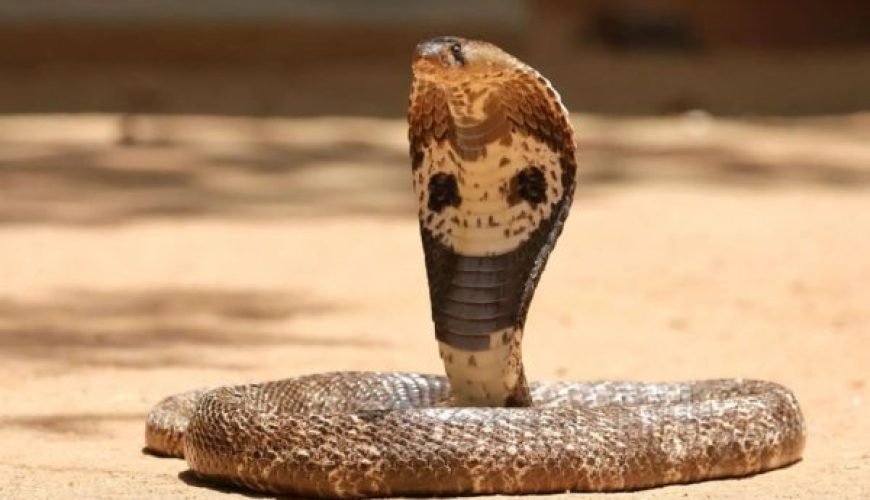
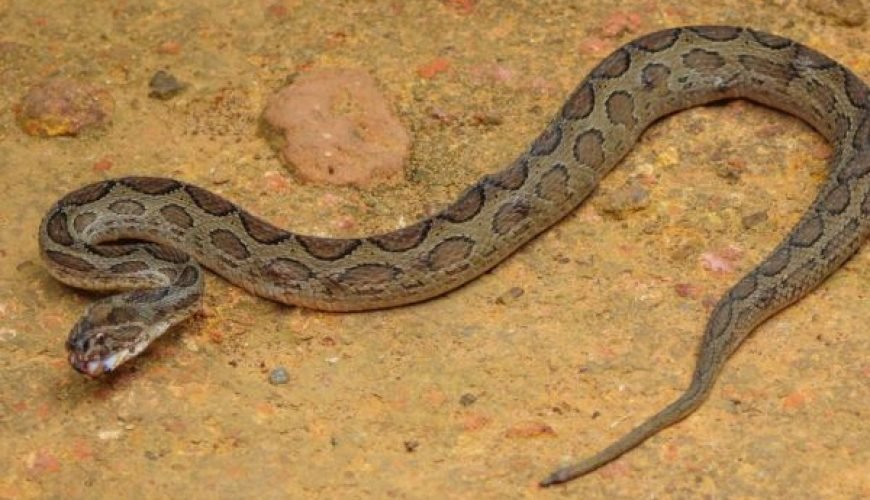






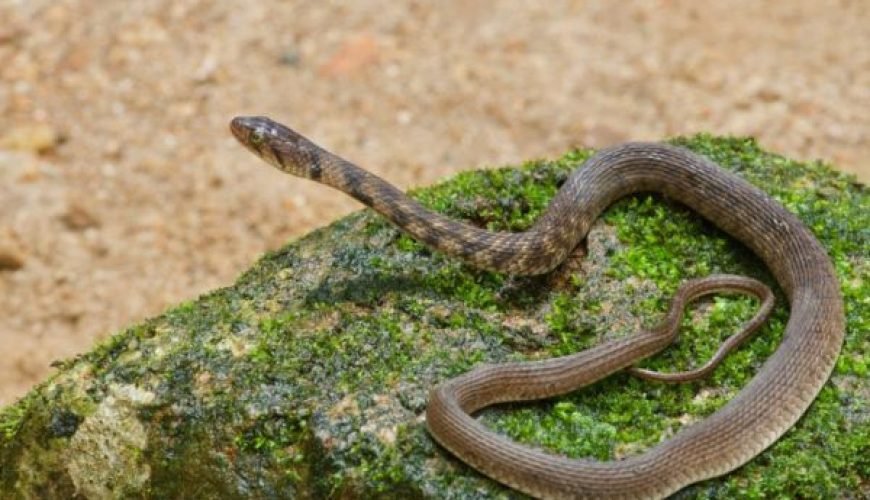

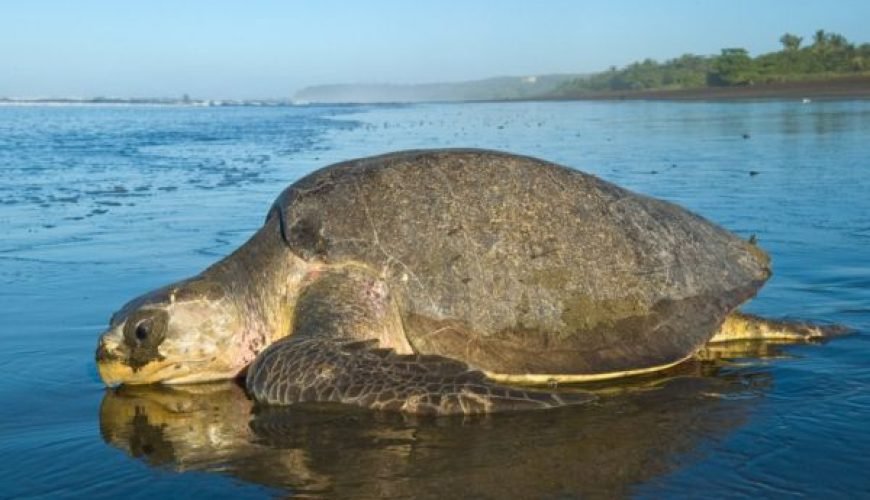

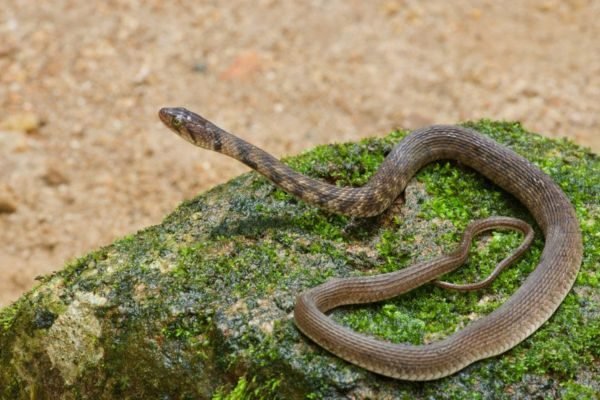
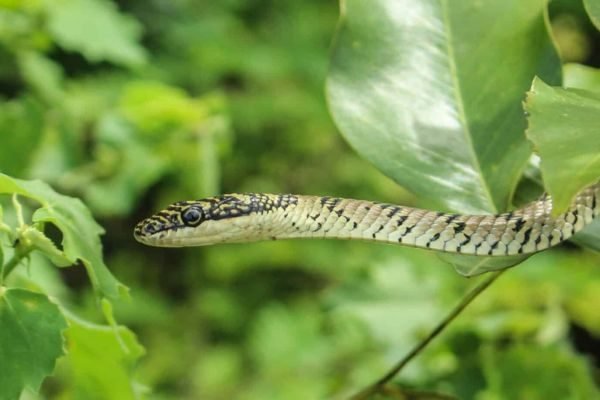
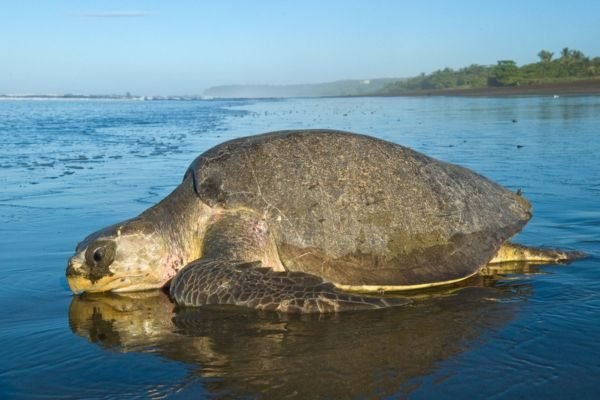
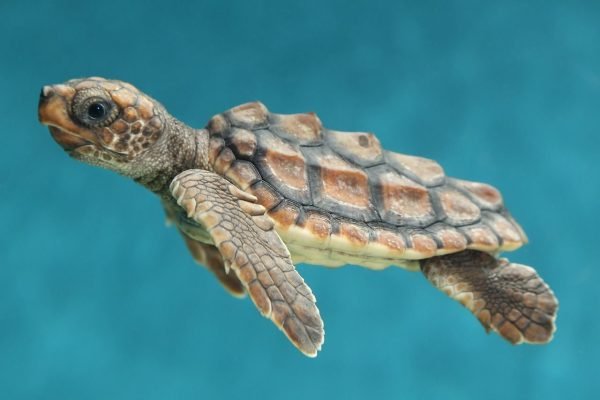
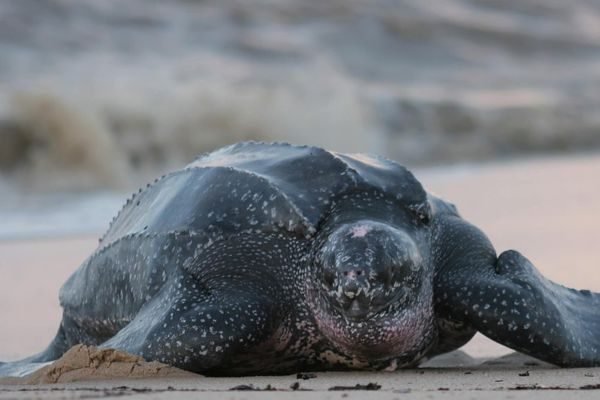
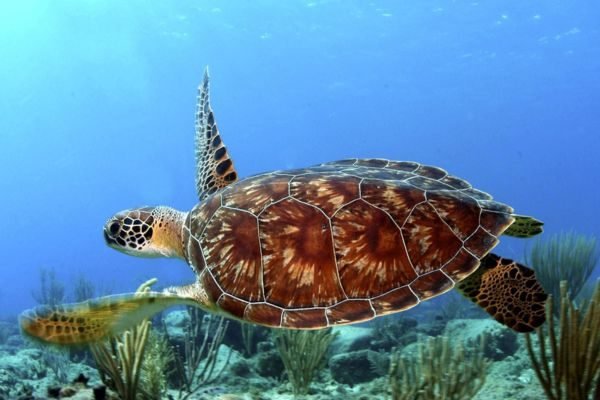
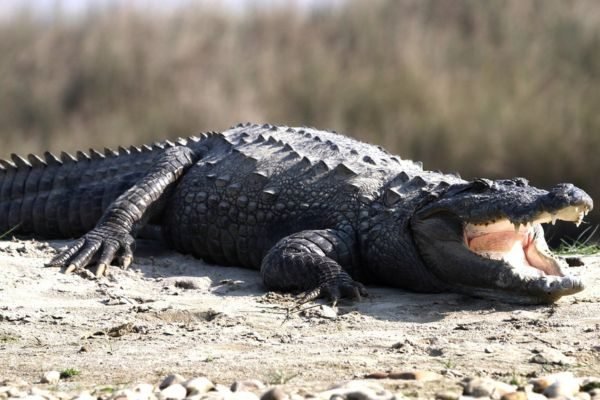

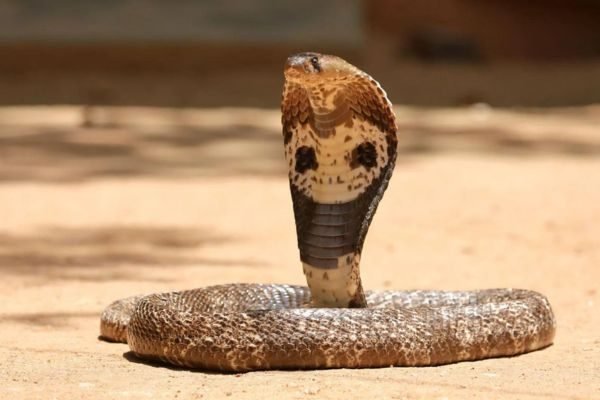

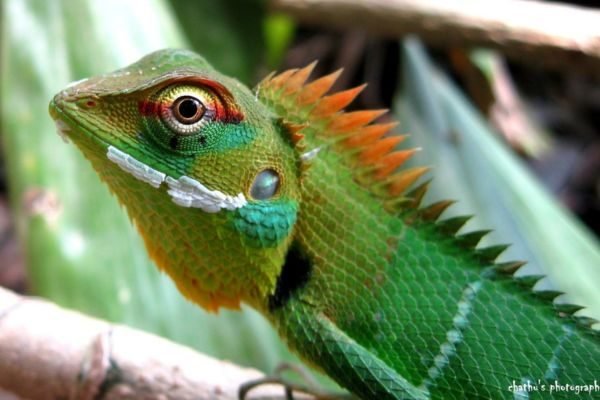
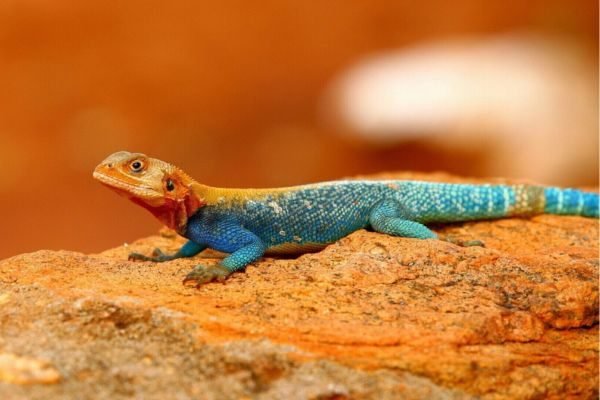
0 Comment